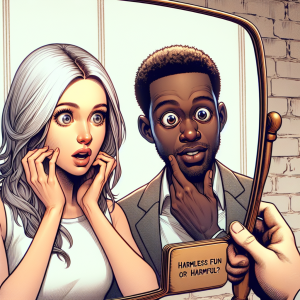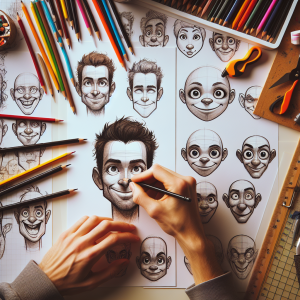From Real to Cartoon: Transforming Human Faces
In today’s digital age, the transformation of human faces from real to cartoon has become a popular trend. With advancements in technology and the rise of social media platforms, people are constantly looking for new and innovative ways to express themselves. One such way is through the transformation of human faces into cartoons. This process has opened up a whole new world of creative possibilities and has sparked the interest of artists and enthusiasts alike.
The process of transforming human faces into cartoons involves using various digital tools and software to manipulate and alter the facial features of a person, creating a cartoon-like representation of their likeness. This can be done for various reasons, ranging from artistic expression to entertainment and social media content. In this article, we will explore the fascinating world of transforming human faces into cartoons, the tools and techniques used, and the impact it has on art and visual communication.
Tools and Techniques
The transformation of human faces into cartoons often requires a combination of creative skills and technical knowledge. Artists and creators use a variety of digital tools and software to achieve the desired effect. One of the most popular software used for this purpose is Adobe Photoshop. With its powerful tools and features, Photoshop allows artists to manipulate and alter facial features with precision and control. Other software such as Procreate and Illustrator are also commonly used for this purpose.
The process of transforming a human face into a cartoon begins with a high-quality photograph of the subject. The artist then uses the digital tools to adjust and stylize the facial features, including the eyes, nose, mouth, and overall facial structure. This can involve exaggerating certain features, adding bold and vibrant colors, and creating a stylized interpretation of the original photograph. The end result is a cartoon-like representation of the subject that captures their essence while adding a touch of whimsy and creativity.
Impact on Visual Communication
The transformation of human faces into cartoons has had a significant impact on visual communication. In the digital age, visuals play a crucial role in how we communicate and express ourselves. From social media profiles to digital avatars and emojis, the use of cartoon-like representations of human faces has become increasingly popular. This allows individuals to represent themselves in a unique and creative way, adding a personal touch to their online presence.
Additionally, the use of cartoon-like representations of human faces has found its way into various forms of media and entertainment. From animated TV shows and movies to advertising and branding, the use of cartoons has become a powerful tool for visual storytelling. This has opened up new opportunities for artists and creators to showcase their talent and reach a wider audience.
Frequently Asked Questions
Q: Can anyone transform a human face into a cartoon?
A: While anyone can attempt to transform a human face into a cartoon, it requires a certain level of artistic skill and knowledge of digital tools and software. Many artists and creators undergo training and practice to perfect their craft.
Q: Is the transformation of human faces into cartoons ethical?
A: The ethical considerations of transforming human faces into cartoons can vary depending on the context and purpose. It is important to respect the privacy and consent of the subject when creating cartoon-like representations of their likeness.
Q: What are some popular styles of cartoon transformation?
A: There are various styles of cartoon transformation, ranging from simple and minimalist to bold and exaggerated. Some popular styles include anime-inspired, comic book style, and whimsical caricatures.
Q: Can cartoon-like representations of human faces be used for commercial purposes?
A: Depending on the context and the rights involved, cartoon-like representations of human faces can be used for commercial purposes. However, it is important to obtain the necessary permissions and rights for such usage.
Q: What are the limitations of transforming human faces into cartoons?
A: While digital tools and software have made it easier to transform human faces into cartoons, there are limitations to what can be achieved. It requires a level of creative skill and understanding of facial anatomy to create a convincing and appealing cartoon likeness.
In conclusion, the process of transforming human faces into cartoons has become a popular and impactful trend in the digital age. It offers a new way for individuals to express themselves creatively and has opened up new opportunities for artists and creators. As technology continues to advance, we can expect to see even more innovative approaches to this fascinating form of visual communication. Whether for art, entertainment, or personal expression, the transformation of human faces into cartoons has truly captured the imagination of the digital world.








+ There are no comments
Add yours